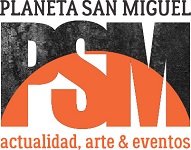By Luis Camarena
Photos by Lander Rodríguez
On countless occasions, I have earnestly wondered what makes San Miguel de Allende such an alluring city. Though the answer may seem obvious, it is actually quite elusive. San Miguel has never been a city of palaces. It was never a major metropolis in terms of size, nor could its economic or cultural activity boast of being a dominant force. Its architecture—with the exception of a few buildings (which I won’t dwell on today)—had, until recently, been of a rather modest refinement.
So, what leads me to compare it to grander, more significant cities, only to conclude that this, our town, gives me so much more—that it elevates my emotions to heights those others never even approach?
I believe the first compelling reason lies in its topography. Unlike the classic colonial city, San Miguel was born and grew nestled into rugged hills. This very fact makes its layout irregular, in contrast to the grid-like structure of other cities. A matter of sinuosity. Our streets are neither straight nor flat; they wind and slope, sometimes even abruptly. As a result, the shifting perspectives create a morphological richness impossible in grid-based cities.
The pedestrian, meandering along, pauses and observes, absorbing the impact of the erected forms before continuing—driven by a kind of mysterious curiosity—ascending or descending as the path demands, gradually forming an image of a whole abundant in variations. And as if that weren’t enough, there is also a crucial element of continuity: the visitor contemplates the city’s forms, and their gaze extends to the edges of the natural landscape. Thus, the experience of absorbing the urban context seems to conclude only when sight dissolves into the surrounding scenery—valleys, mountains, sunsets—the landscape as an extension of the city’s essence.
It is a matter of approximation. As an example, let us fix in our minds some of the city’s landmarks: the Parish Church, the convents and churches, the old springs of El Chorro, the Parque Benito Juárez, or its incredible Jardín (what other Mexican cities call the zócalo). Now, let us imagine arriving at them via these winding, sloping paths I’ve described. We quickly realize we never approach them head-on; instead, our arrival is always oblique, on uneven ground. Perspectives thus project toward multiple vanishing points, multiplying the aesthetic effect of both these landmarks and the façades lining the streets.
Topography, sinuosity, approximation, and continuity. Valuable traits. Qualities that add up. Yet the San Miguel Effect does not end there. I must mention another fundamental aspect: its scale. Have you noticed how the proportion of public spaces in San Miguel always refers back to the individual, even in moments of collective expression? Indeed, in our city, public space does not spill over into the collective in terms of scale but remains, as if by enchantment, in an almost intimate dimension. The result is a pleasant sense of belonging—the architecture does not merely contain us; it embraces us. As if the language of its forms were not one of institutional grandiosity but of the persistent idea of the person, the individual, as the center of everything.
The same applies to the elements of our architecture. The scale of buildings relates to the individual, not the collective. We are speaking, then, of proportion. And what is proportion if not a system of relationships between the parts of a space or a building? Our architecture still preserves a scale whose reference point is the person—not the group. Even when gatherings occur, they happen at an immediate scale, as if the people around us were guests wandering through the garden of our own home.
Perhaps this is what compels the community to express itself in such close, tangible ways. Scale fosters ritual. We have countless commemorations that unfold across the city in ceremonies happening just steps away from passersby. Scale shortens distances. Suddenly, dancer and spectator seem to merge into a single celebratory impulse. All of this gives much to discuss—such as the nature of rituals and syncretism, topics I won’t delve into now for lack of space, except to say that San Miguel is also, par excellence, the city of syncretism and rites.
Unfortunately—and it must be said—these qualities are undergoing alarming changes due to real estate speculation and the imposition of large-scale buildings whose architectural value is not only null but downright shameful.
It would be gratifying if this reflection took root, if more spaces emerged where these anomalies could be openly discussed. Not one voice, but many. We, the inhabitants of this marvelous city, deserve it.











